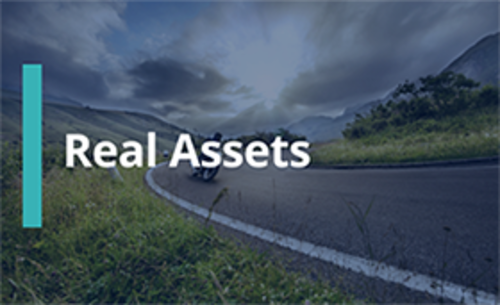Summary
A rewiring of the global economy is forcing investors and policymakers to proceed with caution. Such prudence is justified. There may be superficial parallels with the trade shock delivered by the pandemic, but limited lessons can be drawn from the temporary disruptions that occurred at the start of the decade. Today, the US administration’s approach to commerce, security and international relations is ushering in structural changes that will outlast its tenure.
It is all too easy to focus on the negative aspects of such shifts. It is true that unpredictable policymaking is an unfavourable backdrop for investment and consumption, and it increases the difficulty of forecasting how economies will perform. Even the International Monetary Fund is now producing “reference trajectories” rather than projections. Uncertainty about the economic outlook, or even the rules of engagement when it comes to international trade and diplomacy, is also triggering elevated levels of market volatility.
But there are some positives that will influence asset prices. Most major economies have so far proved relatively resilient despite the flux. For example, US growth may slow to 1.6% this year, below its potential, but the Federal Reserve will probably manage the delicate balancing act that is required to avert recession while keeping inflation in check. Also, while the US administration has made tariffs and security its priority, planned tax cuts and deregulation are likely to mitigate the toll that trade levies may take on US economic activity in the coming year. As a result, a corporate profit recession is unlikely.
Also, not all countries have the same leeway as Germany to deploy fiscal policy. Investors are increasingly sensitive to rising fiscal burdens and are demanding a higher premium for holding very long-dated bonds, even for benchmark US Treasuries. Governments can adjust issuance plans to reduce the supply of such debt. But shortening the average maturity profile of public debt carries its own risks, which may put limits on how much supply can be calibrated. This points to a further steepening of benchmark yield curves. Nor will central banks have the same scope to embark on the bond-buying sprees that they did in past decades, when inflation was tamer and there were fewer trade frictions.
Portfolio allocation is also becoming more complicated as some familiar relationships between asset prices are breaking down. For example, investors can no longer count on the US dollar to function as a natural hedge when stocks fall; riskier assets and the greenback have tended to fall in tandem in recent months. Nor can stock and bond prices be relied on to move in opposite directions.
Enhancing the resilience of portfolios becomes paramount in this environment. Hedging to reduce foreign exchange risks is a topic of rising importance, especially for non-dollar investors. And diversification is ever more imperative.
This is true within asset classes as well as across a portfolio. Focusing on long-term themes, rather than chasing day-to-day market swings, can help identify the segments of the equity market that may best withstand the current turbulence. Such trends include the rise in European defence spending, US deregulation, and corporate governance reform in Japan. It is also worth looking for investment opportunities in emerging economies whose strong domestic demand prospects offer some insulation against trade frictions. India is one of the prime examples of such an economy.
Turbulence may be a feature of markets for a while as the new geoeconomic order takes shape. But the uncertainty and policy noise are creating opportunities that are already evident.
Allocating in a polarised world
Our economic-financial cycle models (ref. in the chart below) suggest that a late-cycle scenario is the most likely outcome, indicating a mildly risk-on allocation. Incorporating geopolitical insights from historical parallels shows a greater likelihood of polarised outcomes, with potential shifts towards positive recovery phases and a significant probability (34%) of negative phases (contractions) that should be factored into asset allocation. The new normal of tariffs contributes to a persistent inflationary backdrop, increasing the risk of adverse outcomes such as stagflation or even higher inflation (hyperinflation). This heightens fragilities, as rising inflation will affect production costs through higher purchasing prices, putting pressure on profit margins. Consequently, we expect earnings growth to decelerate to 6%, but not an earnings recession, as recent results remain encouraging.
We favour a mild risk-on allocation designed to withstand an inflationary regime with downside risks, considering expensive market valuations and growth concerns. This involves a well-diversified equity approach with a focus on valuations, pricing power, and margins to identify areas that can withstand inflationary pressures, alongside tactical duration management. In credit, we favour quality, especially in Europe, where the risk/return profile is compelling. With stagflation risk, hedges against equity downside should be considered, while commodities and gold are becoming key hedges in case of hyperinflation. We also look at asset classes that thrive in inflation, such as infrastructure, which offers stable cash flows and benefits from government spending. FX will also play an increasingly relevant role, as changing USD correlation patterns in the USD will call for higher currency diversification and hedging.
Get the full picture

| A rewiring of the global economy is forcing investors and policymakers to proceed with caution. |
Get more insights

India and EM are winners |

Private diversification |

"The Great Diversification" | ||
| Read the article | Read the article | Read the article |


